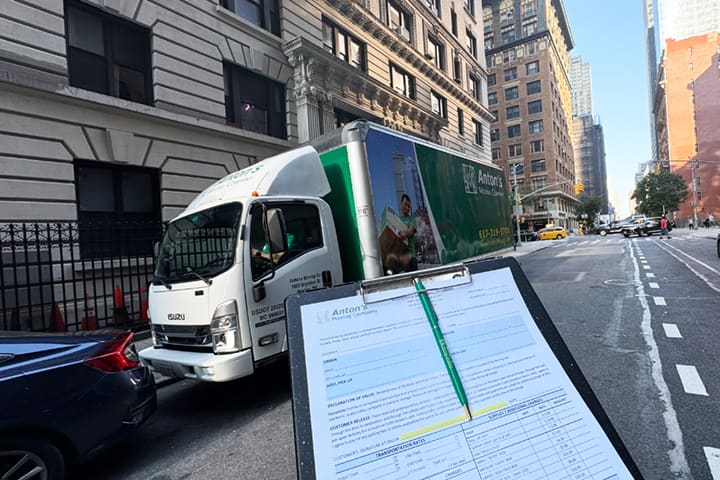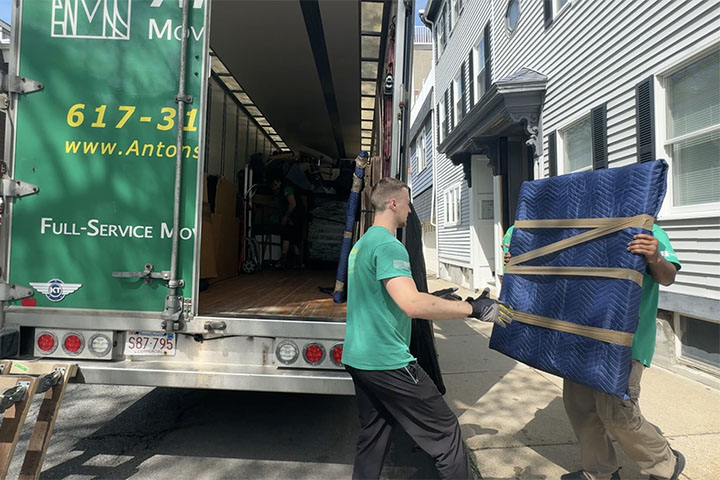COI & NYC Insurance Requirements: What You Need Before Moving Day
August, 2025 Time: - 8 minute read

Moving in New York City takes more than just boxes and a truck. You’re working around strict building rules, tight hallways, and property managers who expect everything to be by the book. It’s not unusual to run into fines or delays if you miss even one small detail like a missing Certificate of Insurance.
That’s where moving insurance comes in. It keeps you protected and ensures your building lets the move happen in the first place. If you skip it, the whole plan can fall apart before the first box leaves your apartment.
At Anton’s Movers, we handle NYC moves daily, and we’ve seen how important insurance really is. This guide breaks it down clearly so you know exactly what you need and how to avoid last-minute surprises before moving day arrives.
Why Insurance Matters When Moving in NYC
Moving across town can feel like a full-time job and in New York City, it’s a logistical puzzle. Every building has its own rules. Some only allow moves during specific hours. Others limit elevator access or require insurance paperwork days in advance.
Insurance is the safety net in all of this. Most NYC buildings won’t even let movers in unless they’ve submitted a Certificate of Insurance ahead of time. These requirements protect building owners from liability and cover any damage that might happen during your move.
And it’s not just about rules. If a mover accidentally scratches your hardwood floors or breaks a building fixture, insurance handles the repair costs. If someone gets injured carrying a sofa up a narrow staircase, insurance covers that too. Without proper coverage, those costs can land directly on your shoulders.
The right moving company will already have all the coverage in place. Besides, they’ll know how to get it submitted to your building manager without a hitch. That’s part of what makes Anton’s Movers such a reliable choice for NYC moves.
What Is a Certificate of Insurance (COI)?
A Certificate of Insurance, or COI, is a document that proves your moving company has the proper insurance coverage. It’s not just a formality but rather a requirement. Most NYC apartment buildings won’t let the movers inside unless a COI has been submitted and approved ahead of time.
This certificate shows that your movers carry enough coverage to pay for damages, injuries, or other claims if something goes wrong during the move. But it’s not something you, the tenant, create. Your movers provide it directly to the building management.
Here’s what a typical COI includes:
- Liability coverage: Covers injury or damage during the move.
- Property damage limits: Pays for accidental damage to the building or your unit.
- Workers’ compensation: Protects against injury claims if a mover gets hurt on the job.
- Additional insured clause: Names the building as an insured party in case of a claim.
NYC Buildings and COI Requirements
Most residential buildings in New York take COI requirements very seriously. Landlords and property managers have every right to request this paperwork before move-in or move-out day. If it’s missing, your movers could be turned away at the door.
Why Buildings Require COIs
It’s easy to understand why. Moves are disruptive, especially in tight, shared spaces like elevators and narrow stairwells. A scratched floor, chipped banister, or jammed elevator door can cost thousands in repairs. And if a mover slips or gets injured, the building doesn’t want to be held responsible.
That’s why most buildings require your moving company to submit a COI. It protects their property and reduces legal risk if anything unexpected happens.
How to Submit a COI to Your Building
The submission process is usually pretty straightforward, but it needs to be done in advance. Most buildings ask for the COI at least three to five business days before your move.
Start by contacting your building’s manager or superintendent. Ask them to send over a sample COI or a list of their exact insurance requirements. Once you have that, your moving company will handle the rest: they’ll fill out the form, add the building as an “additional insured,” and send it directly to the right contact.
Make sure this gets done on time. If the building doesn’t receive the COI in advance, they may deny entry to your movers on the day of the move.
Types of Insurance NYC Movers Must Carry
When you're hiring a moving company in NYC, there are several types of insurance they’re legally or contractually expected to have.
General Liability Insurance
This is the foundation of all mover insurance. It covers the cost of accidental damage to a building or your belongings during the move. If a dolly scrapes the lobby wall or a box breaks a light fixture, this insurance pays for the repair.
Most landlords require this coverage, and it’s non-negotiable in many NYC buildings. A legitimate moving company will always be able to provide proof of general liability coverage.
Workers’ Compensation Insurance
New York State law requires all employers to carry workers’ comp. This coverage pays for medical bills or lost wages if a mover is injured while working in your home or building. It also protects you and the building from being held responsible.
If your movers lack workers’ comp and someone gets hurt, you could be the one dealing with legal consequences. That’s a risk worth avoiding entirely.
Commercial Auto Insurance
This policy covers any damage the moving truck might cause while transporting your items. Whether it’s a dented mailbox or a fender bender outside your building, commercial auto insurance ensures the moving company, not you, handles the cost.
What You Need to Do Before Moving Day
Planning ahead takes some of the stress out of moving in NYC. There’s no shortage of paperwork and moving parts to juggle, but insurance is one area where you can lock things down early and avoid headaches.
Confirm Your Building’s Insurance Requirements Early
Start this part as soon as you have your move date set. Each building has its own list of requirements, and they won’t all match. Some may ask for higher coverage limits, while others might need to be listed in a very specific way on the COI.
Ask your building manager or front desk for their insurance guidelines. If they have a sample COI, share it with your moving company. That keeps everything aligned from the start.
Choose a Licensed and Insured Moving Company
Don’t just assume a mover is fully covered. Ask to see proof. A licensed and insured moving company should have no trouble sending over copies of their policies or recent COIs.
Look for phrases like “licensed and bonded,” and verify that they’re registered with the U.S. Department of Transportation if the move is across state lines. If you're staying within NYC, they should be registered with the New York State Department of Transportation (NYSDOT).
When you go with an experienced team like Anton’s Movers, all of this comes standard. We know how to navigate building requirements, and we’ll handle your insurance documentation without delays or confusion.
Final Thoughts
Moving day in NYC runs smoother when everyone’s on the same page, and insurance is often the piece that makes everything else fall into place. A missing COI can block access to your building, delay your timeline, or even leave you responsible for expensive repairs or injury claims.
At Anton’s Movers, we provide complete insurance documentation tailored to your building’s needs and deliver it on time, every time. Our crew is fully licensed, insured, and trained for the demands of New York City moves. When everything’s covered, you can focus on the move itself instead of the paperwork.


